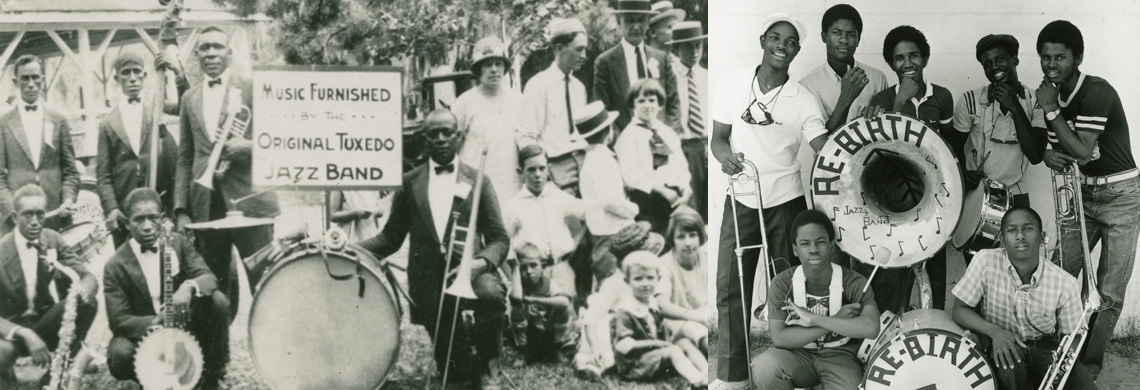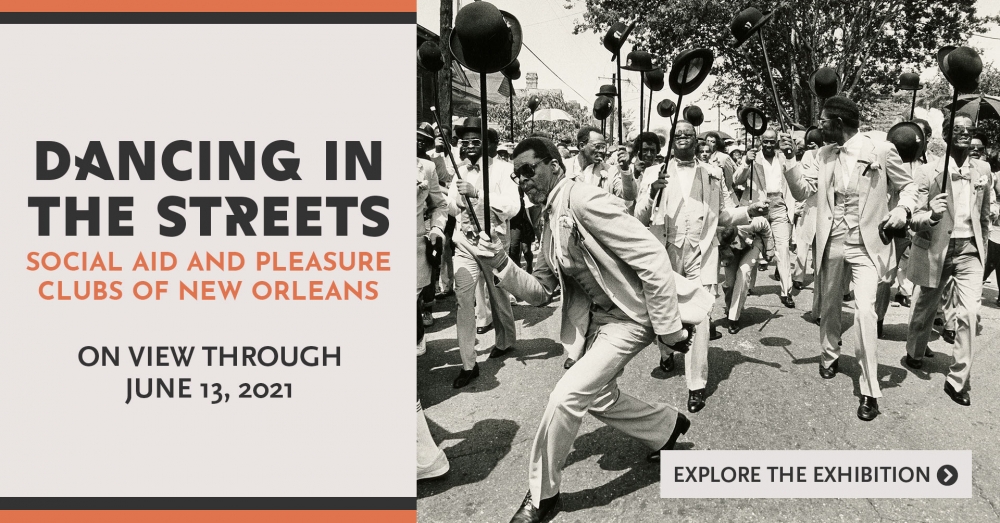Over the course of the past century, the sound of horns singing out above a driving second-line beat has become an ingrained component of New Orleans’s unique musical culture.
 This tradition dates back to the mid-19th century, when a national craze for brass bands erupted in New Orleans. By century’s end, there were an estimated 10,000 active bands in the US, equaling roughly one band for every 6,300 people. These bands embraced the popular music of the period, including transcriptions of opera overtures, martial music, folk songs, and popular melodies. In New Orleans, both white and black brass bands existed and operated in similar spheres—playing a similar repertoire, wearing military-inspired uniforms, and adopting aspirational and inspiring names such as the Excelsior and Onward.
This tradition dates back to the mid-19th century, when a national craze for brass bands erupted in New Orleans. By century’s end, there were an estimated 10,000 active bands in the US, equaling roughly one band for every 6,300 people. These bands embraced the popular music of the period, including transcriptions of opera overtures, martial music, folk songs, and popular melodies. In New Orleans, both white and black brass bands existed and operated in similar spheres—playing a similar repertoire, wearing military-inspired uniforms, and adopting aspirational and inspiring names such as the Excelsior and Onward.
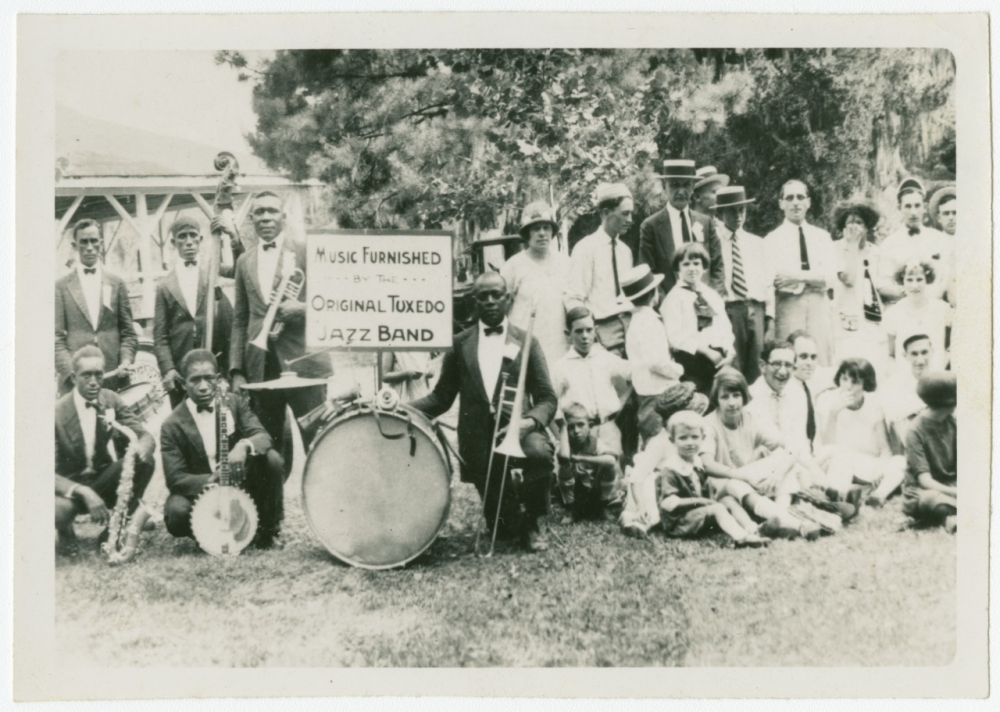
Oscar Celestin and the Young Tuxedo Jazz Band are shown in the late 1920s or early '30s. Brass bands have adapted to incorprate the popular music styles of the day, including jazz, since the late 19th century. (The William Russell Jazz Collection at THNOC, acquisition made possible by the Clarisse Claiborne Grima Fund, 92-48-L.218)
During the same period, benevolent societies and social aid and pleasure clubs boomed in popularity among the city’s African-American and Afro-Creole populations. These groups sponsored church, club, and funeral parades, providing work for the many black brass bands and creating a mutually beneficial patronage relationship that has nurtured brass band music, musicians, and parade culture through the decades. The gigs informed the repertoire, which combined sacred hymns with popular tunes according to occasion and audience.
From there, brass bands continued to incorporate the new sounds of the day into their music.
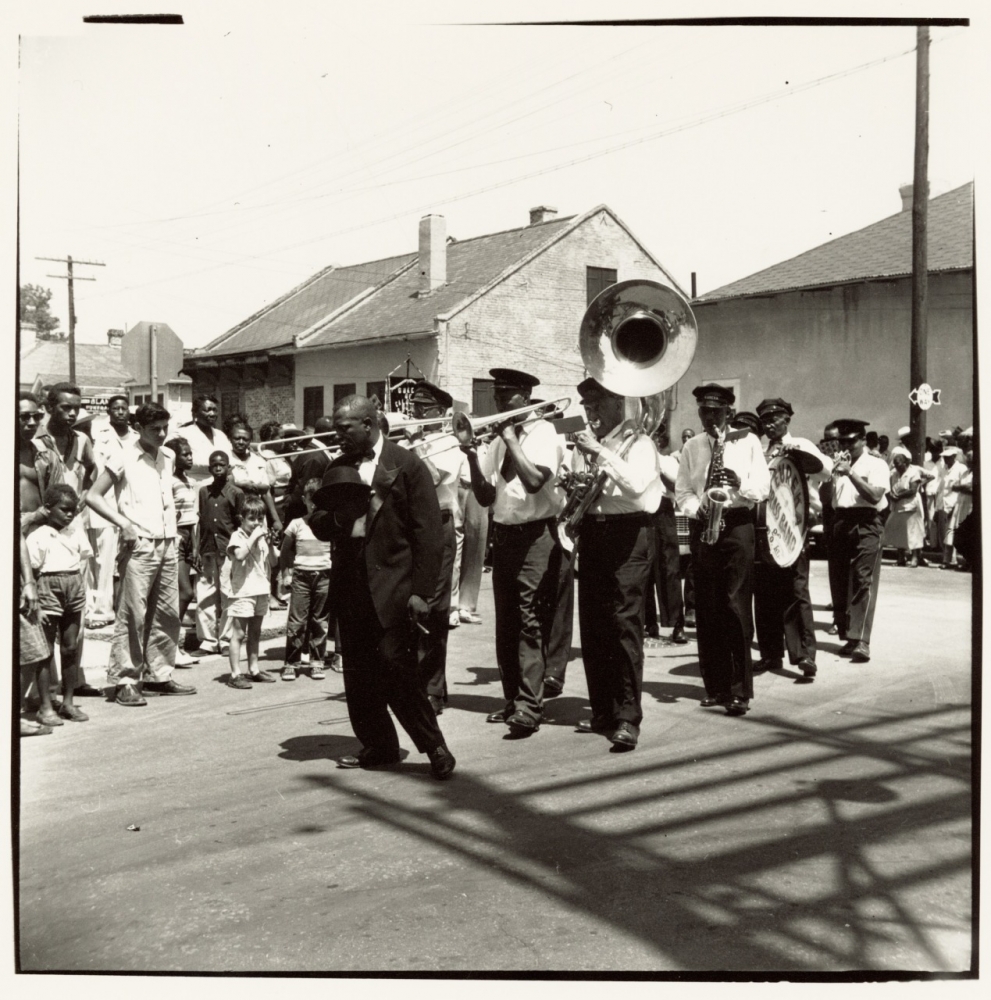
Early brass bands embraced aspirational and inspiring names such as Eureka (shown here in 1955) and Onward, and much of their work came from events and funerals held for benevalent societies like the Dukes of Caldonia Social and Pleasure Club, whose banner can be seen in this image. (The John Bernard Photographic Archive at THNOC, 1999.41.3.5)
The introduction of jazz performance styles around 1900 forever changed the local brass band idiom. Bands such as the Original Tuxedo and the Superior, which operated as both orchestras for venue performances and as brass bands for marching gigs, began incorporating jazz elements. Though some musicians operated in only one sphere, many played parades and clubs, interweaving repertoire and style. In this way, jazz not only influenced brass band music, but was itself affected by the bands and their musical traditions—flourishing in and reacting to the performance spaces provided by black churches, benevolent societies, and social aid and pleasure clubs.
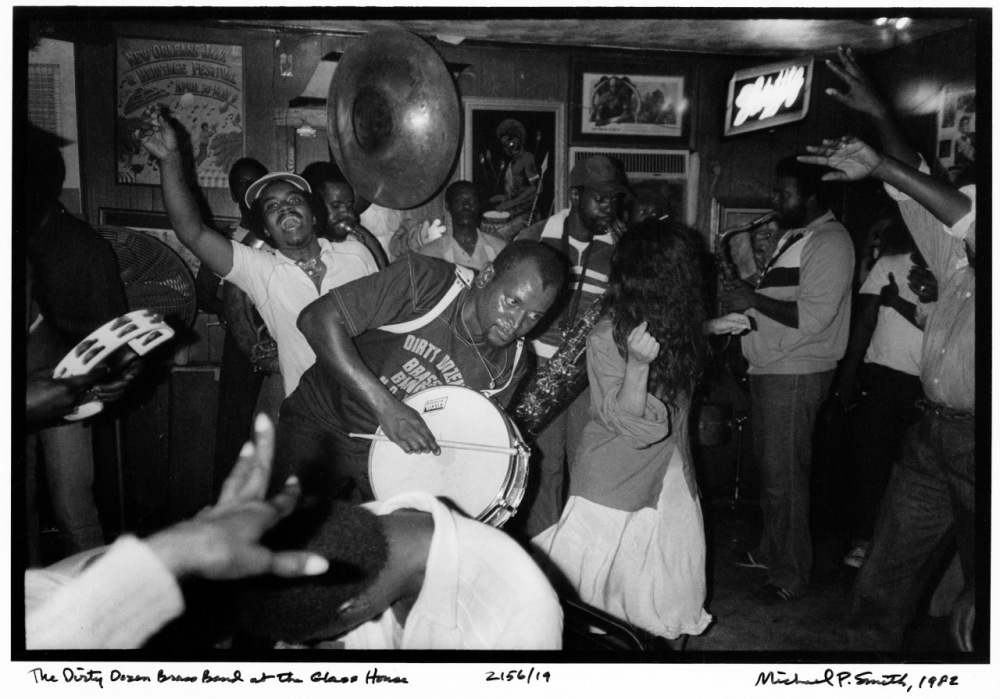
The Dirty Dozen Brass Band plays at the Glass House in 1982. They were among the first groups to include elements of bebop and funk in their music, furthering the incorporation of popular music into the brass band repertoire. (Photograph by Michael P. Smith ©The Historic New Orleans Collection, 2007.0103.4.330)
In the late 1970s, as popular music and culture evolved further, the Dirty Dozen redefined what a New Orleans brass band could be. This group updated its music to include bebop and funk elements. In doing so, they realigned the brass band repertoire with popular music of the period—just as the traditional bands had during their era of inception. Numerous popular bands have followed in the Dozen’s footsteps, including Rebirth, the Hot 8, and the Soul Rebels—all of whom use hip hop and contemporary popular music elements in constructing their sound and style while maintaining the tradition of playing club and funeral parades.
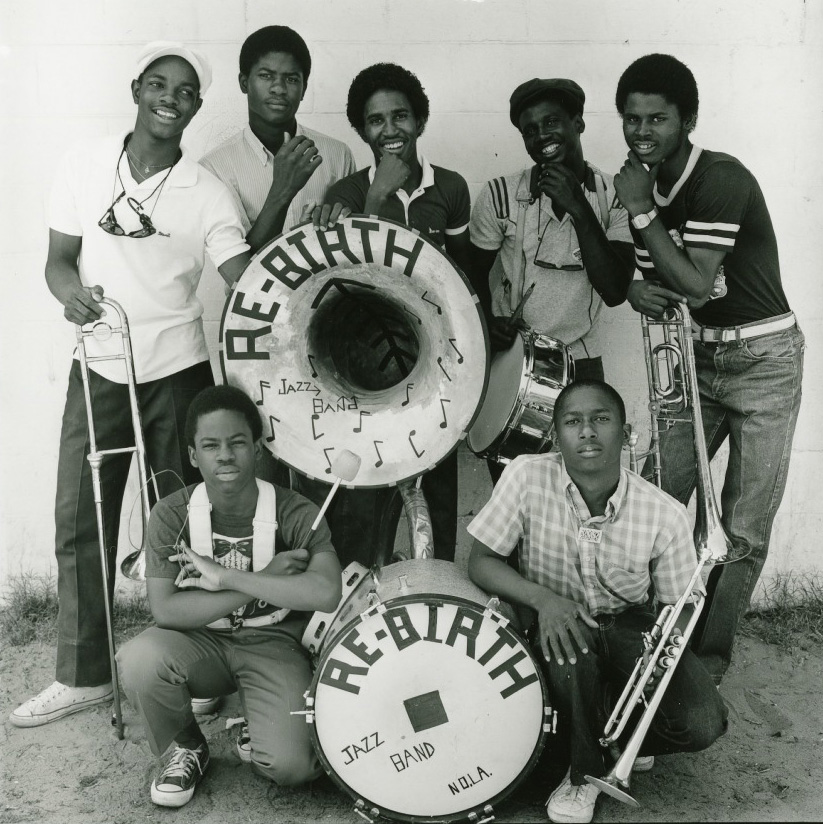
The Rebirth Brass Band followed in the Dirty Dozen's footsteps to incorporate hip-hop and contemporary music into its sound. (Photograph by Michael P. Smith ©The Historic New Orleans Collection, 2007.0103.4.352)
While some bands have pushed the brass band style and tradition in new directions, others, such as the Liberty, Young Tuxedo, and Olympia continue to embrace the traditional style in their performances. This intentional focus on maintaining traditions helps to preserve a cultural practice well over a century old. Together, the performance practices of traditional and contemporary-style bands represent an integral, living component of New Orleans’s musical heritage.
A version of this story originally appeared in the Historically Speaking column in the New Orleans Advocate. 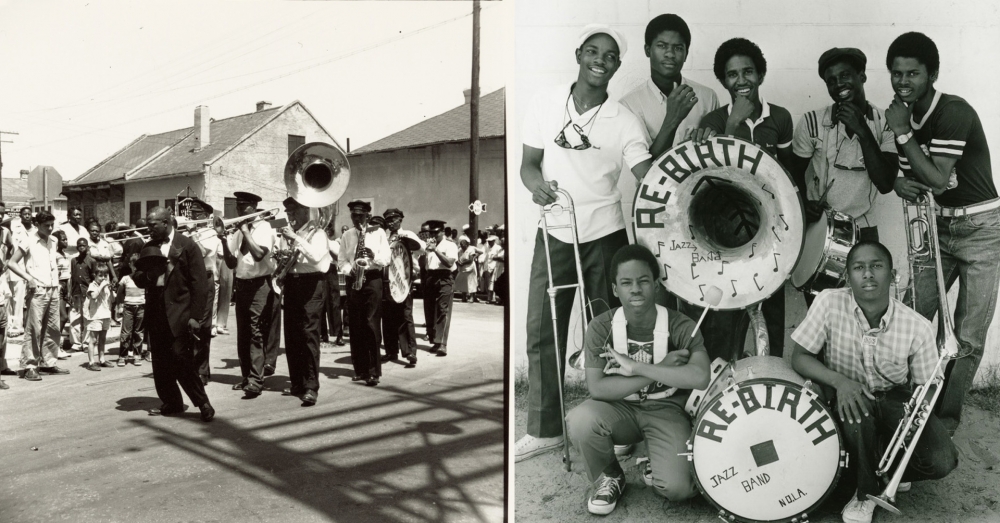 For more on New Orleans second lines, visit THNOC's exhibition Dancing in the Streets.
For more on New Orleans second lines, visit THNOC's exhibition Dancing in the Streets.

